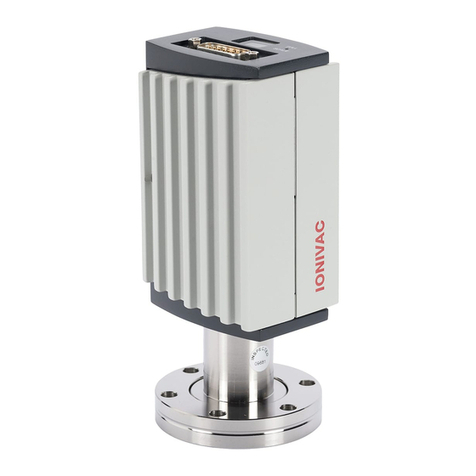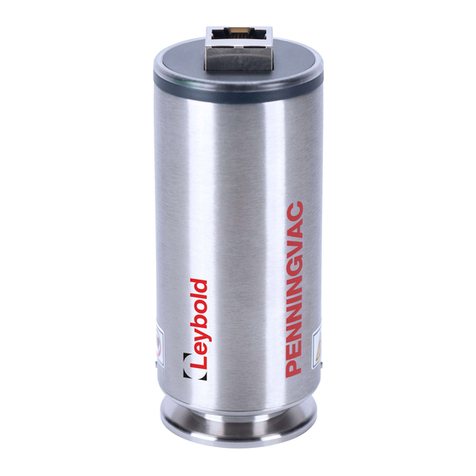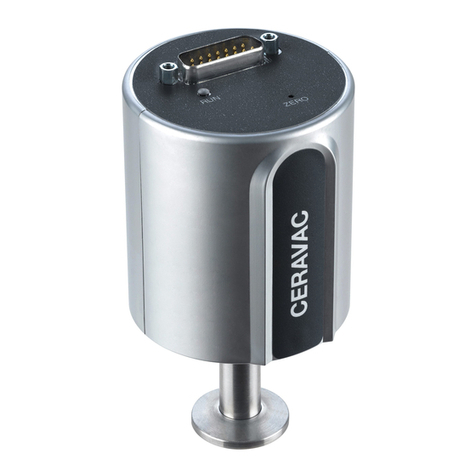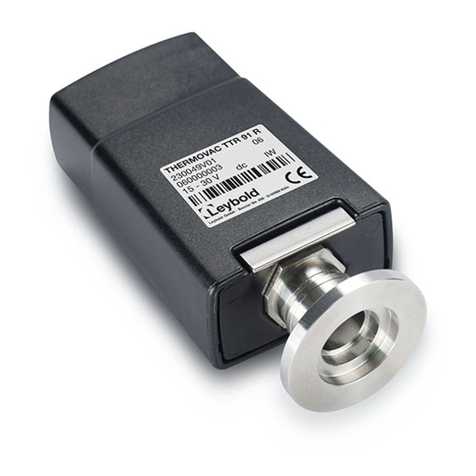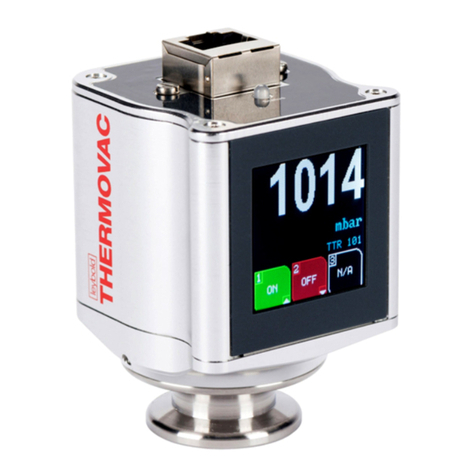
Leybold Service
If equipment is returned to LEYBOLD, indicate whether the equipment
is free of substances damaging to health or whether it is contaminated.
If it is contaminated also indicate the nature of the hazard. LEYBOLD
must return any equipment without a Declaration of Contamination to
the sender’s address.
General Remarks
We reserve the right to alter the design or any data given in these Ope-
rating Instructions.The illustrations are not binding.
Contents Page
1 Description . . . . . . . . . . . . . . . . . . . . . . . . . . 3
1.1 General . . . . . . . . . . . . . . . . . . . . . . . . . . . . . 3
1.1.1 Purpose . . . . . . . . . . . . . . . . . . . . . . . . . . . . . 4
1.2 Technical data . . . . . . . . . . . . . . . . . . . . . . . . . 4
1.2.1 General data . . . . . . . . . . . . . . . . . . . . . . . . . . 4
1.2.2 Measurement system . . . . . . . . . . . . . . . . . . . 5
1.2.3 Signal output . . . . . . . . . . . . . . . . . . . . . . . . . 5
1.2.4 Switching threshold . . . . . . . . . . . . . . . . . . . . . 5
1.2.5 Control input . . . . . . . . . . . . . . . . . . . . . . . . . . 6
1.2.6 Status display . . . . . . . . . . . . . . . . . . . . . . . . . 6
1.2.7 Monitor output . . . . . . . . . . . . . . . . . . . . . . . . 6
1.2.8 Mechanical data . . . . . . . . . . . . . . . . . . . . . . . 6
1.2.9 Ambient conditions . . . . . . . . . . . . . . . . . . . . . 6
1.3 Technical description . . . . . . . . . . . . . . . . . . . . 6
1.4 Equipment . . . . . . . . . . . . . . . . . . . . . . . . . . . 7
1.4.1 Supplied equipment . . . . . . . . . . . . . . . . . . . . 7
1.4.2 Accessories . . . . . . . . . . . . . . . . . . . . . . . . . . 7
Page
2 Operation . . . . . . . . . . . . . . . . . . . . . . . . . . . 8
2.1 Installation of the TTR 211 S; TTR 211 S2;
TTR 211 NPT;TTR 216 S . . . . . . . . . . . . . . . . 8
2.2 Electrical connection . . . . . . . . . . . . . . . . . . . 10
2.2.1 Power supply . . . . . . . . . . . . . . . . . . . . . . . . 12
2.2.2 Measurement signal output . . . . . . . . . . . . . . 12
2.2.3 Switching threshold . . . . . . . . . . . . . . . . . . . . 12
2.2.4 Monitor output . . . . . . . . . . . . . . . . . . . . . . . . 14
2.2.5 Switching over the chart recorder output . . . . 14
2.2.6 Identification . . . . . . . . . . . . . . . . . . . . . . . . . 14
2.3 Start-up . . . . . . . . . . . . . . . . . . . . . . . . . . . . 15
2.3.1 Operation . . . . . . . . . . . . . . . . . . . . . . . . . . . 15
2.3.2 Measurement system status indication . . . . . 15
2.4 Troubleshooting . . . . . . . . . . . . . . . . . . . . . . 15
3 Maintenance . . . . . . . . . . . . . . . . . . . . . . . . 16
3.1 LEYBOLD service . . . . . . . . . . . . . . . . . . . . . 16
3.2 The operating electronics . . . . . . . . . . . . . . . 16
3.3 The sensing cell . . . . . . . . . . . . . . . . . . . . . . 16
3.3.1 Cleaning the sensing cell . . . . . . . . . . . . . . . 16
3.3.2 Exchanging the sensing cell . . . . . . . . . . . . . 17
3.3.3 Alignment of the sensing cell . . . . . . . . . . . . . 18
4 Spare parts list . . . . . . . . . . . . . . . . . . . . . . 18
Annex 1 . . . . . . . . . . . . . . . . . . . . . . . . . . . . . . . . . 19
Annex 2 . . . . . . . . . . . . . . . . . . . . . . . . . . . . . . . . . 21
2
2GA 09.216/2.02 - 02/96
